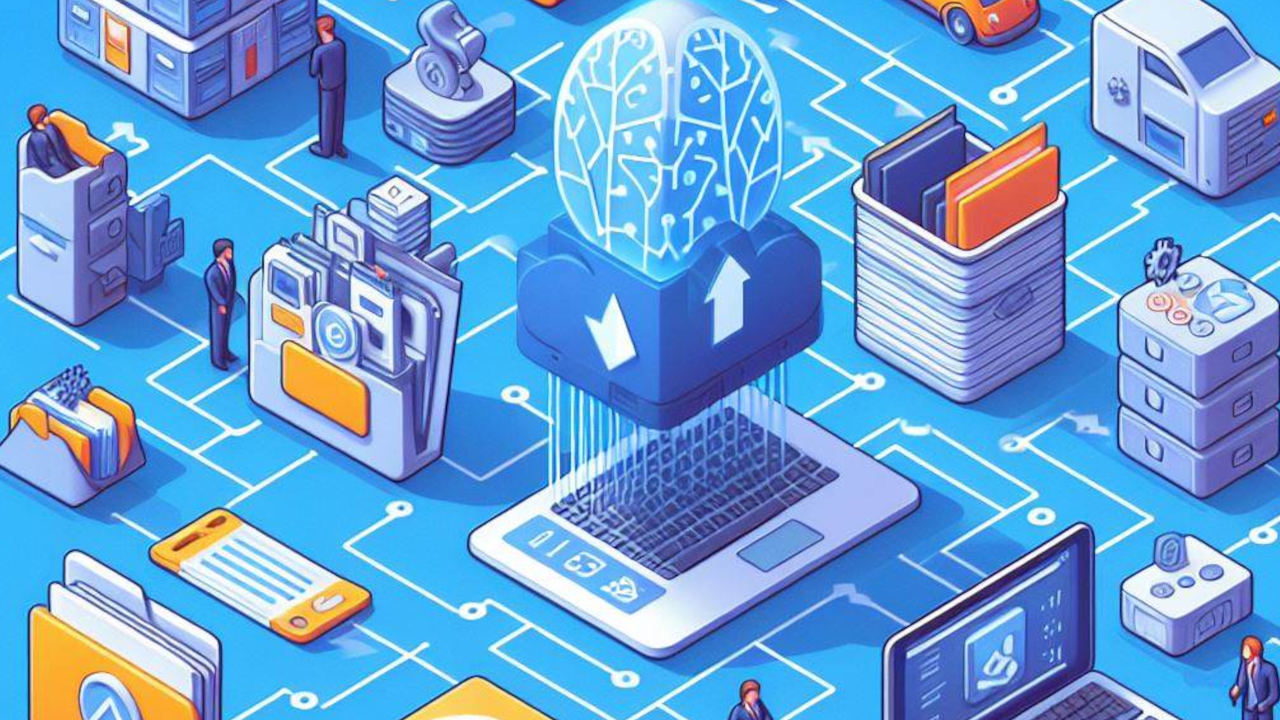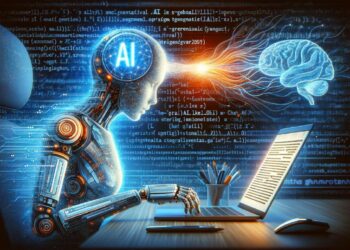The world of Artificial Intelligence (AI) has long been dominated by monolithic, proprietary Large Language Models (LLMs)—massive systems trained by a handful of tech giants. These “closed-source giants” held the monopoly on capability, scale, and performance. However, a seismic shift is underway. Thanks to relentless innovation from the academic community, independent researchers, and aggressive optimization techniques, open-source AI models are now not only challenging but, in many specialized metrics and real-world deployments, outperforming their proprietary counterparts. This democratization of high-performance AI is fostering an explosion of innovation, driving down operational costs, and fundamentally changing the balance of power in the tech industry.
This comprehensive article analyzes the technical breakthroughs that enable smaller, open-source models to achieve superior results, explores the strategic advantages of the open AI ecosystem, details the critical market implications, and outlines the inevitable future where performance is decoupled from proprietary control.
The Technical Triumph: How Open Source Models Win
The outperformance of open-source models is not accidental; it is the result of focused, community-driven innovation on efficiency, training methodology, and architecture.
A. Parameter Efficiency and Optimization
The prevailing wisdom used to be that performance scaled linearly with the number of parameters. Open-source research has debunked this, proving that quality and efficiency of parameters matter more than sheer quantity.
- Sparsity and Mixture-of-Experts (MoE): Advanced open-source architectures are pioneering the use of sparse models, where only a small subset of the model’s parameters is activated for any given task. This drastically reduces the computational load during inference (when the model is generating a response) without sacrificing the model’s overall knowledge base. MoE architectures, a form of sparsity, allow open models to maintain a vast parameter count while operating with incredible efficiency.
- Quantization Techniques: Researchers are perfecting techniques like quantization (e.g., QLoRA, GGML), which reduce the precision of the weights in the neural network (from 32-bit floating point to 8-bit or even 4-bit integers). This shrinks the model’s size and memory footprint by up to 8 times, allowing high-performance models to run on consumer-grade hardware or small enterprise servers.
- Instruction-Tuning and Alignment: The open community has become exceptionally adept at instruction-tuning, a process where a foundational model is refined using a small, high-quality, human-curated dataset of prompts and responses. This focused alignment ensures the model follows human directions precisely, often leading to better, safer, and more useful outputs for specific tasks than generic, large models.
B. Superior Data Quality and Curated Datasets
While closed models are trained on gargantuan, often unfiltered datasets, open-source success hinges on surgical precision in data curation.
- Synthetic Data Generation: The community leverages advanced techniques to generate high-quality, synthetic training data that is clean, diverse, and perfectly aligned with the desired performance objective (e.g., complex reasoning, coding). This focused training set is often more effective than simply throwing more raw web data at the model.
- Domain-Specific Fine-Tuning: Open models can be legally and easily fine-tuned on highly specialized, proprietary, or domain-specific datasets (e.g., legal documents, medical research, internal codebases). This allows a smaller model to achieve superhuman performance within a narrow domain, easily outclassing a general-purpose closed model in that specific application.
- Crowdsourced Error Correction: The transparent nature of open models allows a global community of users and researchers to rapidly identify, report, and help correct model errors or biases, leading to faster iteration and superior alignment over time.
 Strategic and Economic Advantages of Open Source AI
Strategic and Economic Advantages of Open Source AI
The superior performance metrics of open models translate into massive strategic, operational, and financial benefits for businesses and developers.
A. Drastic Reduction in Operational Costs
The primary driver for enterprise adoption is the dramatic reduction in the total cost of ownership (TCO) compared to using proprietary APIs.
- Lower Inference Costs: Optimized open models require less computing power (fewer GPUs and less RAM) to run at high speed. A model that can run on a single commodity GPU versus needing a cluster of specialized cloud GPUs results in inference costs that are ten to a hundred times lower.
- Elimination of API Fees: By hosting the model locally or on a private cloud instance, organizations entirely bypass the transaction-based fees charged by closed AI vendors for every API call, turning a variable operating expense into a fixed hardware investment.
- Customization and Fine-Tuning: Fine-tuning an open-source model is generally far cheaper and faster than retraining a proprietary model from scratch or relying on vendor-specific customization tiers.
B. Security, Privacy, and Data Sovereignty
For industries with strict regulatory and privacy requirements (finance, healthcare, defense), running open models provides non-negotiable advantages.
- Zero Data Leakage Risk: Since the model is hosted within the organization’s firewall (on-premise or private cloud), sensitive proprietary data used for fine-tuning or inference never leaves the secure environment. This completely eliminates the risk of data leakage via a third-party API provider.
- Auditability and Transparency: Organizations can fully inspect the model’s internal workings, layers, and weights—something impossible with closed models. This transparency is critical for regulatory compliance and for ensuring that the AI operates without hidden biases or unexpected behaviors.
- Control and Longevity: The organization maintains full control over the model’s versioning and longevity. They are not beholden to a vendor’s sudden price increase, policy change, or arbitrary decision to deprecate an API, ensuring long-term operational stability.
C. Acceleration of Innovation and Experimentation
Open source fosters a culture of rapid building and iteration that is impossible in a closed ecosystem.
- Composability: Open models are inherently modular. Developers can easily combine components from different models (e.g., using a high-quality open-source text encoder with a novel open-source decoder) to build unique and highly specialized applications.
- Accessibility for Startups: Open models lower the financial barrier to entry, allowing small startups and academic teams to leverage state-of-the-art AI without needing billions of dollars in initial investment, accelerating the rate of technological diffusion and new business formation.
- Reproducible Research: The ability for researchers to access, verify, and build upon the work of others ensures that scientific progress in AI is reproducible and verifiable, driving the field forward faster than any single proprietary lab could.
Market Implications and Strategic Shifts
The rise of high-performing open-source AI is reshaping the competitive landscape and redefining where value is created in the AI supply chain.
A. The Commoditization of Model Weights
As high-quality, foundation models become freely available (or nearly so), the models themselves are becoming a commodity.
- Value Moves Up the Stack: The core business value shifts away from possessing the best foundation model to building the best application layer on top of the model. Companies must focus on superior user experience, data integration, and unique domain-specific knowledge (the “moat”) rather than relying on the model’s raw intelligence.
- Infrastructure Dominance: The new battleground is AI infrastructure and services. Tech giants will increasingly compete not on the model they sell, but on the superior, highly optimized, and cost-effective cloud hardware and tooling they offer for running and fine-tuning the open-source models (e.g., specialized cloud chips like TPUs or specialized GPU clusters).
B. Ecosystem Fragmentation and Specialization
The open ecosystem encourages the proliferation of highly specialized models, each optimized for a specific, narrow task.
- Best-in-Class Micro-Models: Instead of using one massive model for everything, enterprises can use a swarm of smaller, specialized open models—one for code generation, one for document summarization, and one for customer sentiment analysis—each achieving superior performance in its niche while maintaining collective cost efficiency.
- The Role of Model Aggregators: New services are emerging to help enterprises navigate the rapidly growing jungle of open models, providing evaluation, security vetting, and unified deployment platforms for these specialized AI components.
C. Democratization of AI Talent and Knowledge
The availability of source code and training methodologies accelerates the upskilling of the global developer community.
- Learning Through Code: Developers can download, inspect, and reverse-engineer state-of-the-art models, providing unparalleled learning opportunities that dramatically increase the pool of skilled ML engineers globally.
- Global Collaboration: Open platforms facilitate collaboration across continents, allowing specialized knowledge from different industries or scientific disciplines to be rapidly integrated into model development, solving global problems faster.
 Navigating the Future: Challenges and Best Practices
Navigating the Future: Challenges and Best Practices
While the open-source movement is immensely powerful, it faces inherent challenges that organizations must address strategically.
A. Licensing and Legal Complexity
Open source does not mean “public domain.” Organizations must carefully manage licensing risks.
- Permissive vs. Restrictive Licenses: Models released under permissive licenses (like Apache 2.0 or MIT) are generally safe for commercial use, but others, especially those based on research licenses, may have restrictions on commercial usage, requiring careful legal review before deployment.
- Training Data Rights: The provenance and licensing rights of the data used to train a model remain critical. Organizations must ensure that adopting an open model doesn’t inadvertently expose them to intellectual property disputes related to the training data.
B. Security and Maintenance Overhead
Running models in-house transfers the security and maintenance burden from the vendor to the enterprise.
- Security Patches: The enterprise is responsible for actively monitoring the open-source community for security vulnerabilities and promptly applying patches to their internal models and hosting infrastructure.
- MLOps Complexity: Deploying and managing a custom-tuned open model requires robust MLOps practices, including monitoring for model drift and deploying new versions, skills that many traditional IT teams must acquire.
C. The Need for Responsible AI Governance
The power of open models demands a parallel commitment to ethical and responsible use.
- Bias Mitigation: Open models, like all LLMs, can inherit and amplify biases from their training data. Enterprises must implement rigorous internal testing and fine-tuning to ensure fairness and reduce harmful outputs for their specific use cases.
- Safety and Misuse: The widespread availability of highly capable open models raises concerns about malicious use (e.g., generating highly convincing deepfakes or targeted misinformation). This necessitates a collaborative effort between the open community and regulators to implement safeguards.
The revolution driven by high-performing open-source AI models is irreversible. By leveraging optimized architectures, specialized tuning, and the power of collective innovation, open models are rapidly closing the performance gap, and in many practical applications, surpassing the closed giants. This shift is not just a technical victory; it is an economic realignment, empowering every organization with the tools to innovate securely, privately, and cost-effectively, defining an open, decentralized, and ultimately more capable future for artificial intelligence.










